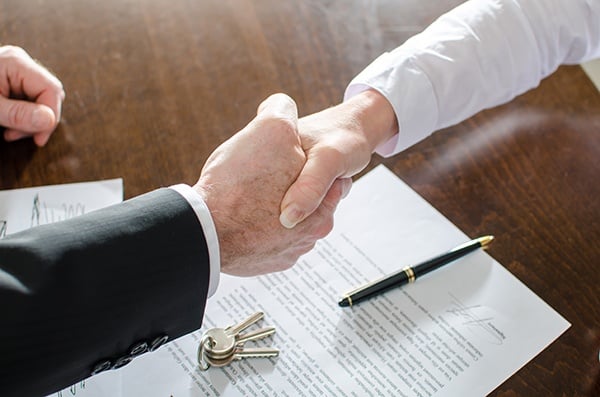 A sale-leaseback may be one of the best forms of alternative real estate financing available to building owners. Commercial real estate investors typically snap up sale-leaseback properties at attractive prices, letting real estate-using companies free up capital for other uses. Major companies including Walgreens, FedEx, Home Depot, Microsoft and Disney have all used sale-leaseback financing to improve returns on investment.
A sale-leaseback may be one of the best forms of alternative real estate financing available to building owners. Commercial real estate investors typically snap up sale-leaseback properties at attractive prices, letting real estate-using companies free up capital for other uses. Major companies including Walgreens, FedEx, Home Depot, Microsoft and Disney have all used sale-leaseback financing to improve returns on investment.
In a sale-leaseback, you agree to sell your property to a commercial real estate investor and lease it back for a set period of time, usually at least ten years. While you occupy the building, you pay rent and operating expenses under the triple net structure. This gives you control over the building. When the lease expires, you have options to renew at pre-negotiated terms, letting you stay longer. Or, if you're done leasing the property, you can walk away and leave it with the commercial real estate investor. Sale-leasebacks have three key features:
1. Strong Tenant Financials
The first factor underlying a sale-leaseback is your financial strength. When you sale-leaseback your property, the investor buys it under the assumption that you'll make your rent payments on time, every time. The stronger your financials, the less risk the investor assumes. If your financials aren't strong, you might not be able to access the sale-leaseback market. Furthermore, the stronger they get, the better your pricing will be.
2.Triple Net Lease Structure
Most sale-leasebacks are structured with a triple net lease. This means that the tenant takes full responsibility for the building, sometimes even including major capital improvements. As a tenant, it gives you control over the building just like you are an owner. The commercial real estate investor that buys the building demands this lease structure because it makes the building both easier and less risky to own. For him, the lease acts like a bond where he receives set, predictable payments.
3. Long Initial Term
Stability is key for a commercial real estate investor. When he buys a sale-leaseback property, he knows that he could end up with an empty building some day. As such, the longer the initial term, the safer the lease is for the investor. While some smaller organizations structure five to ten-year sale-leasebacks, the gold standard for the industry, Walgreens, offers leases with a 25-year initial term. The stability of the income from these lease structures allow investors to assume less risk, get better financing and earn more.
Ultimately, these three factors work together to determine the rate of return that the investor demands to buy your sale-leaseback property. The better the investment, the lower the cap rate will be. For example, between 2010 and 2012, the median asking cap rate for a Walgreens property was 5.75%. FedEx properties, which typically carry shorter leases, got a 6.75% cap, while Family Dollar locations that combined short leases with weaker credit and inferior locations demanded 8% caps.
While investors think in terms of cap rates and returns, another way to look at them is as an interest rate. A sale-leaseback is effectively a cash-out refinance for 100% of your building's value with interest-only payments. A 7% cap rate is the same thing as a 7% 100-LTV IO mortgage. Companies turn to sale-leasebacks because this type of financing is essentially impossible to achieve from traditional lenders. Accessing the capital that your business has locked up in its properties could help it grow.
Other articles to check out:
Should You Still Lease Your Space?
When to Do a Commercial Lease Audit
6 Tips for Commercial Lease Transactions
Subscribe for more great tips!!








